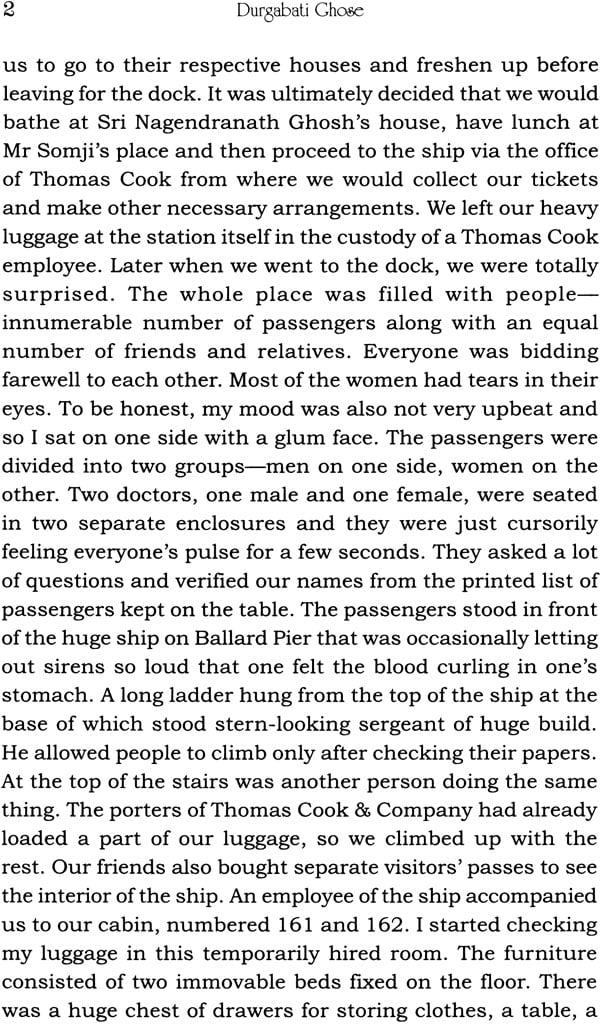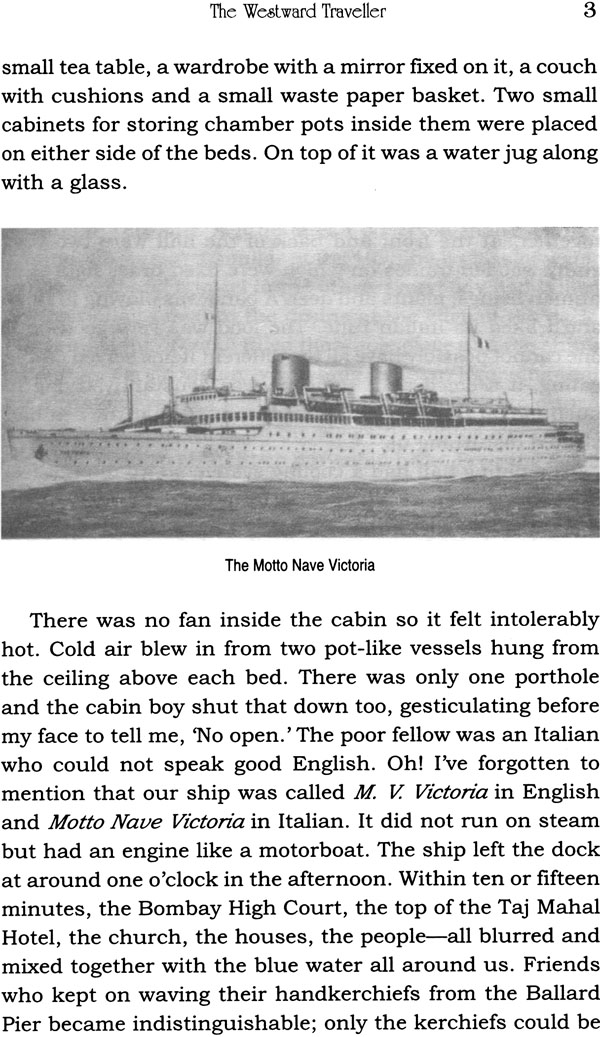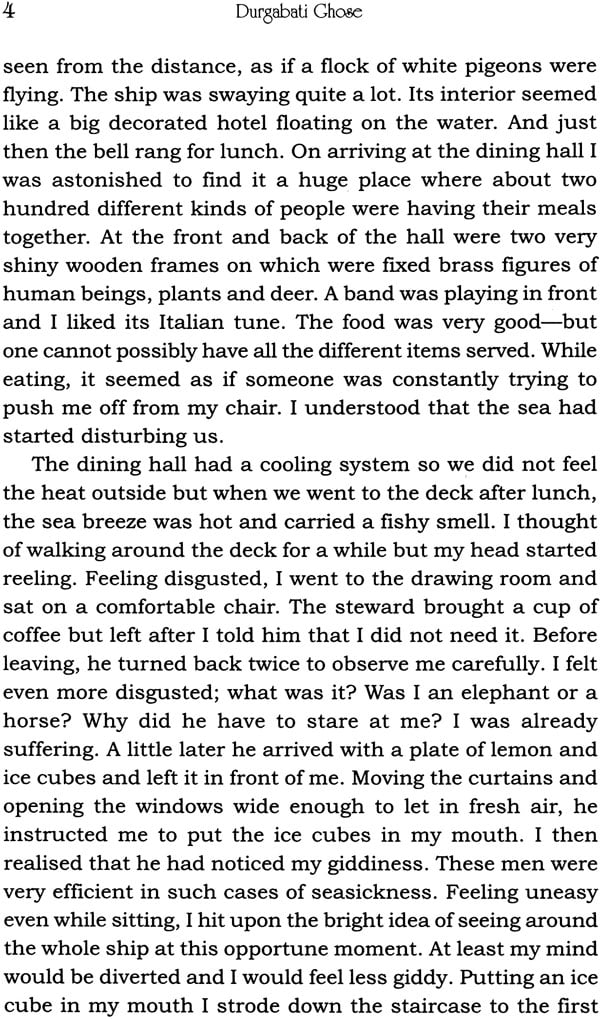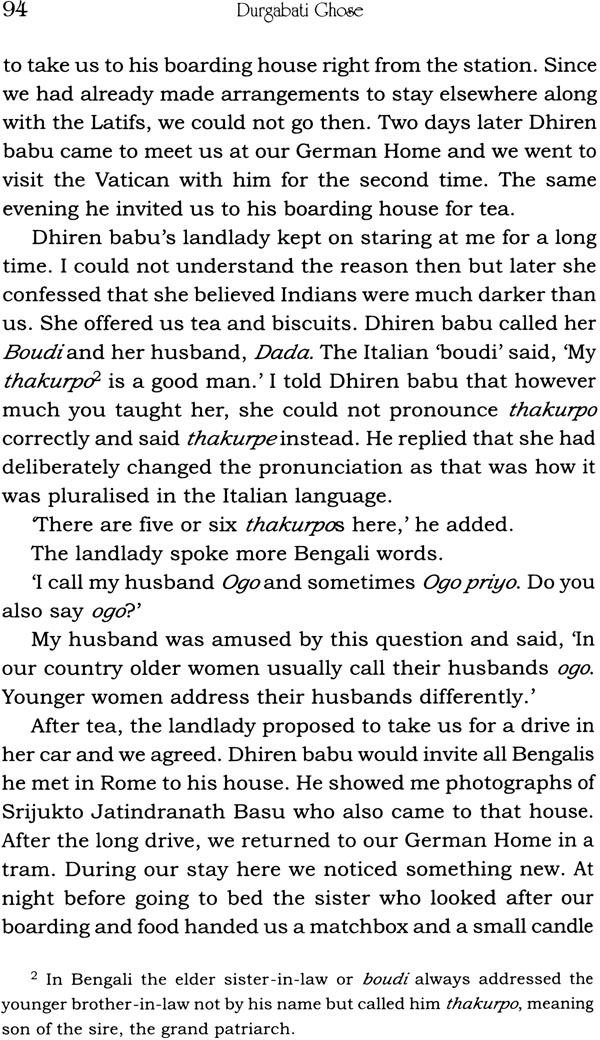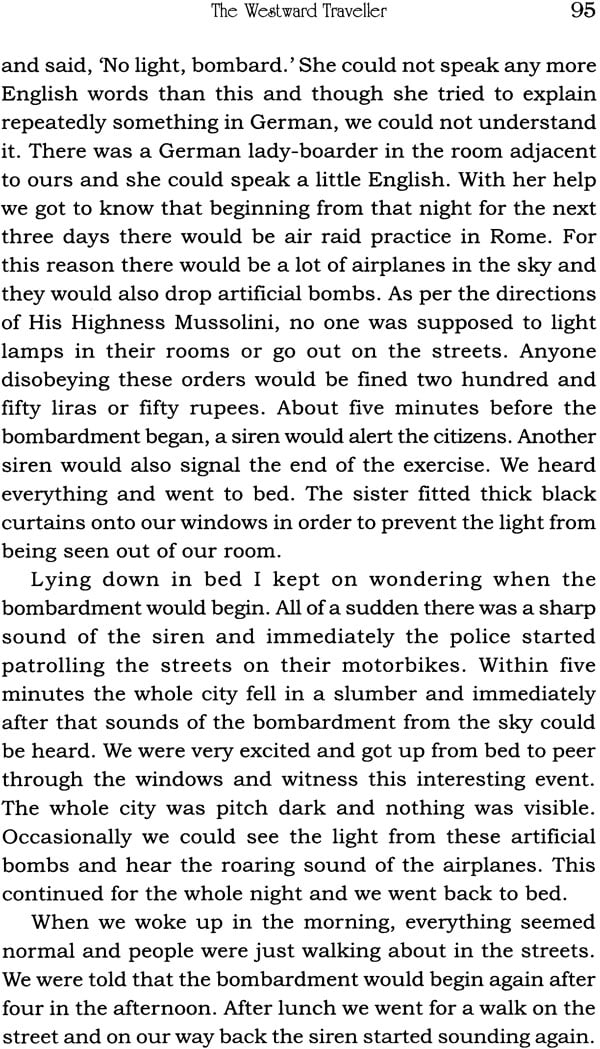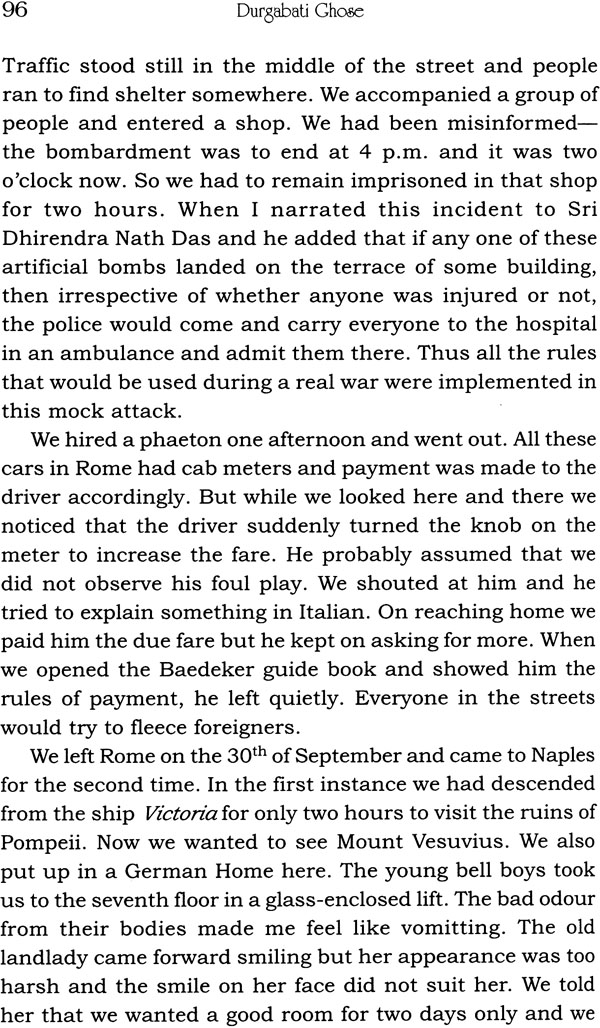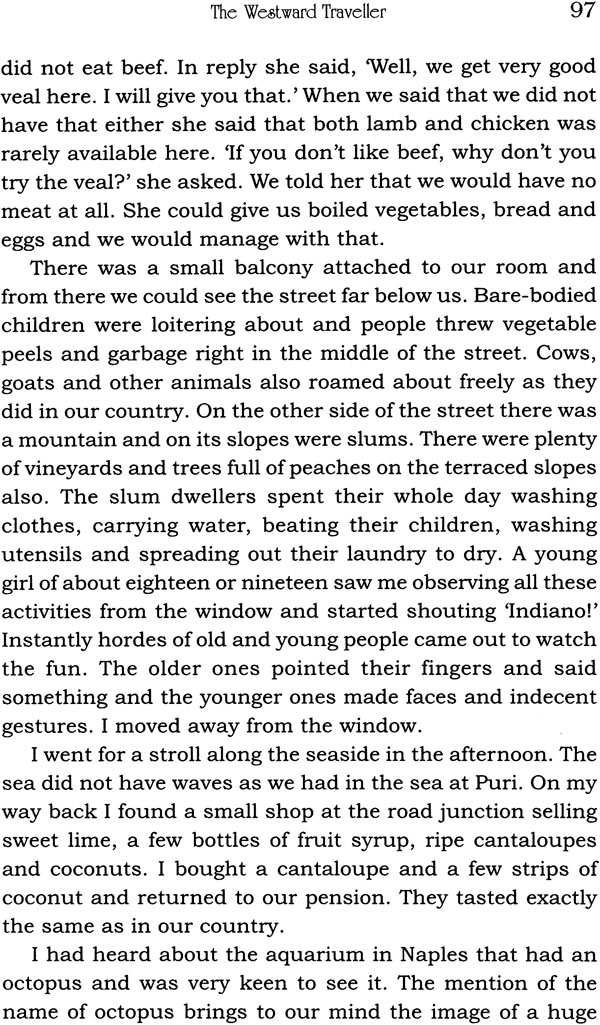
The Westward Traveller
Book Specification
| Item Code: | NAH539 |
| Author: | Durgabati Ghose and Somdatta Mandal |
| Publisher: | Orient Blackswan Pvt. Ltd. |
| Language: | English |
| Edition: | 2010 |
| ISBN: | 9788125039914 |
| Pages: | 128 (22 B/W Illustration) |
| Cover: | Paperback |
| Other Details | 8.5 inch x 5.5 inch |
| Weight | 150 gm |
Book Description
An Interesting fact about this travelogue is that even within its set pattern. It offers nuggets of history. What makes the account endearing IS the various examples of Intercultural encounters and wry comments. often arising from not knowing the language and making value Judgments that can be cited at random. As Ashis Nandy says In his Foreword to this translated work. the way Durgabati recounts her adventures in Europe makes them variations on familiar Bengali domesticity. interpersonal patterns and femininity played outside their natural locale. This gives the travelogue a stamp of predictability and at the same time. a touch of robust. irreverent charm and self-confidence.'
Durgabati Ghose was born in 1905 into a prosperous Bengali family. Her father Girindra Sekhar Basu was the founder of the Indian Psychoanalytical Society. She accompanied her husband on a trip to Europe in 1932, and wrote about her trip in a book title Paschimjatriki A very loving, considerate and liberal woman, she was loved and revered by everyone in the family till her death on 11 January 1992.
Somdatta Mandal is Professor and current Chairperson at the Department of English and Other Modern European Languages, Visva-Bharati, Santiniketan, India. Recipient of several awards and international fellowships, she has published widely both nationally and internationally. She has written two books-Reflections, Refractions and Rejections: Three American Writers and the Celluloid World (2002), Film and Fiction: Word into Image (2005), and has edited and co-edited twelve volumes of scholarly works including Indian Travel Narratives (2010). Her current projects include South Asian Diasporic Cinema and translations of travel narratives from colonial Bengal. She has received an award from Sahitya Akademi for the All India Indian Literature Golden Jubilee (1957-2007) Literary Translation Competition in the Fiction category.
The last three decades of the nineteenth century and the first few of the twentieth witnessed an explosion of travel literature from Eastern India, particularly from Bengal. That Calcutta was the capital of British India till 1911 was of course, one of its reasons. The spread of English education for the middle-class in the nineteenth century played a significant role in developing such narratives. It is through learning English that the enlightened Bengali of the new age learnt to see modern Europe. Also the emancipation of women, inculcated to a great extent by the progressive Brahmo Samaj movement, made the weaker sex venture into Victorian homes. Apart from the opening of the Suez Canal in 1869, these sea voyages to Europe and to England in particular (often referred to by a general term 'Vilayet' in most of the writings) gained greater impetus and were recorded in a variety of literary forms ranging from diaries, religious tracts, personal memoirs, plain literary texts and even poetry.
During the nineteenth century the Hindu pundits had prohibited foreign travel. For any Hindu during those times, crossing the kala pani or the dark waters of the oceans and visiting Europe was not only a cause of turmoil in personal life but was equivalent to a social revolution. For many such adventurers, return resulted in social ostracism or committing religious penance-prayaschitta. That the onrush of travel to the west persisted in spite of such hazards at home, speaks of the coexistence of conservatism and emancipation in the social history of Bengal.
Unlike their male counterparts, living in an era that still primarily assigned them the role of the angel of the house, middle-class Bengali women hardly travelled to the west alone. Barring a few exceptions, most of them went along with their family members, usually accompanying their husbands, fathers or sons. The kind of experiences they relate, and the metaphysical roads they travelled were often quite different. For most of them, the very act of travel bore the signature of modernity. Their narratives crossed boundaries of genre and purpose-personal documents by ordinary women who organised their texts and mapped the self according to the journey, geographic movement providing the root metaphor by which they made sense of their lives.
Krishnabhabini Das, who visited England in 1882 and wrote the first full-length travel narrative called England-e Bongo Mohila [A Bengali Lady in England] (1885) was of course not the first one to transcend the boundaries of the home and the world. Before her, the two Dutt sisters, Aru and Toru had traveled in Europe from 1869 to 1873 with their father Govin Chunder Dutt. Indira Debi Chowdhurani in her book Puratani gives us some information about Rabindranath Tagore's sister-in-law, Gyanadanandini Debi's experiences in England in 1879. Even Rajkumari Bandyopadhyay had successfully travelled to Europe during this period. In The Autobiography of a Princess (1921), Suniti Devee, hailing from the royal family of Coochbehar, describes in great detail several of her visits to England. Interestingly, apart from Saratrenu Devi's Parashye Bongo Romoni (1916) [A Bengali Lady in Persia], Sarala Debi Chowdhurani's Burma Jatra [Trip to Burma] and Hariprabha Takeda's Bongomohilar Japan Jatra (1915)[ A Bengali Lady's Trip to Japan], none of these women travellers wrote any full-length travelogues on their experiences in the west-to Europe and England in particular.

